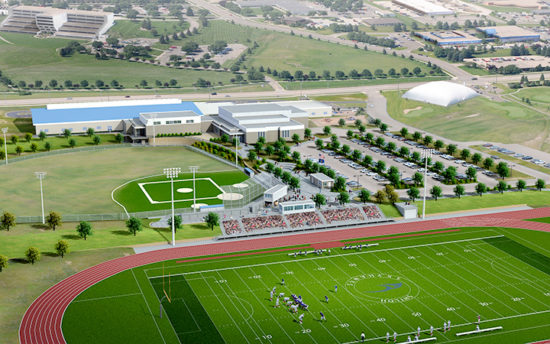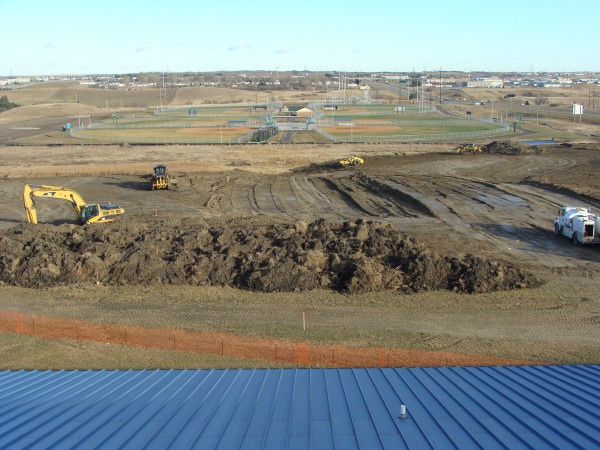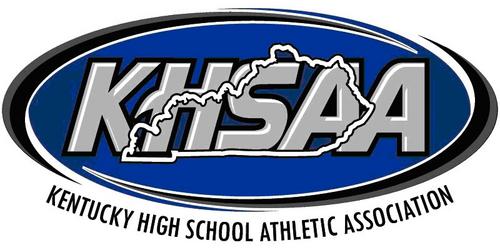A community in need
Shiloh Christian School in North Dakota lends a hand with new athletic facilities
When Shiloh Christian School (N.D.) completes its sports facilities construction, its athletes will finally have a place to call their own, no longer grappling with local high schools to find time for practices and competitions.
The private school certainly deserves it, given the extensive planning and fundraising officials have been engaged in since 2011. Although the new facilities will be stamped with Shiloh’s name, it’s a project the school wants to share with all of the Bismarck community in an attempt to address overcrowding on the city’s limited playing fields.
“We’re a private school, but we really want to be part of the community and provide for the community growth needs as well,” says Shiloh Superintendent Morgan Forness.
|
The community of 63,000 people has just a few locations throughout the city for its high schools, private schools and colleges to host sporting events. Athletic Director Brian Marcus says on any given day between 300 and 400 student-athletes occupy the city’s track facility in an attempt to practice. The congestion is largely attributed to the oil boom in the area, which has resulted in a significant population increase in recent years.
Forness says Shiloh Christian School’s K-12 enrollment was around 300 students four years ago and by this fall it will have doubled. The athletic facilities construction, along with a new fine arts auditorium, will help school officials better manage that growth while helping out a community that’s facing similar challenges.
Building a home
Outside of the school’s gymnasium, Marcus says the athletic department never really had a place to call its own. The baseball team practices in the gym when it can’t find an opportunity to get on a field someplace. The track team also has learned to make due, running in the parking lot or hallways.
Marcus says he builds the baseball team’s schedule around the open dates at a local field. The parks and recreation department and public schools get the first opportunities to reserve dates and Shiloh is left with whatever days remain.
It’s not the ideal situation, but Marcus and student-athletes have made it work over the years. With growing enrollment, Shiloh and other schools in the community are reaching a breaking point. The city is renovating its public athletic facilities, but Shiloh recognized the need was there and wanted to do something more.
|
|
Shiloh’s project came with an $8 million price tag, and included in that was an eight-lane track, a football field and a baseball field. After a few “add-ons,” including artificial turf on the fields, the cost eclipsed the $10 million mark.
The school has a significant amount of fundraising left to do, but the excitement resonates throughout the halls at Shiloh and the community. Especially since the school has embraced the idea of opening the doors of its facilities to the community.
“I’ve always promoted it in a way where we’re certainly going to use the fields for Friday nights, our home baseball games and when they’re available for practices, but 85 to 90 percent of the time we’re going to open them up to the public,” Marcus says. “That’s why it’s here. It’s just the right thing to do and we’re not going to keep it to ourselves. It would sit empty if it was just for us.”
A unique aspect of Shiloh’s planned baseball field is that its outfield and infield will both be equipped with artificial turf–the only one of its kind in the state, Marcus says. That hopefully will prevent delays like the one high schools in the north currently are dealing with, where unseasonable conditions have not yet allowed teams to practice or compete outdoors. With the artificial turf fields, that is expected to change.
“If we had our turf baseball field right now, we’d be the hottest thing in the state,” Forness jokes. “We’re two weeks into (the season) and there is no place to play because the fields are wet and there is frost. We’re actually getting calls from schools north of us asking if they can come down and play us because they have worse conditions than we do.
“Going out there and just having to brush off the snow and play will help tremendously.”
Fundraising & partnerships
Shiloh Development Director Laurie Eisenbeis admits she has no experience fundraising for capital projects, but school officials still sing her praise with what she’s been able to accomplish.
All the money for the project was acquired through fundraising. That helps tremendously in forging relationships with the community, where support often wavers when tax dollars are used for capital projects.
 Partnerships were a key element in Shiloh’s project, and school officials say they’re encouraged by the amount of support they’ve received from the community. Forness said there were meetings with the state athletic association, the chamber of commerce and the city council as Shiloh was trying to create a plan that would benefit the community.
Partnerships were a key element in Shiloh’s project, and school officials say they’re encouraged by the amount of support they’ve received from the community. Forness said there were meetings with the state athletic association, the chamber of commerce and the city council as Shiloh was trying to create a plan that would benefit the community.
“The board here at the school asked that I take some time to visit with not only the school staff but the entire Bismarck community,” Forness says. “We met with the state activities association too because they’re always looking for facilities to meet the needs of district and state competitions.”
Forness and Eisenbeis agree that the key to their success in fundraising was to simply go out and tell their story.
“We went to chamber meetings, various groups like the VFW and rotary and we told our story,” Forness says. “We had tremendous coverage from the media, and the positive press has made people aware of our desire to meet our needs and the needs of the community.”
One of the few obstacles Shiloh did encounter on the fundraising front is that the city is also remodeling its own large athletic facilities. Shiloh supports the city’s project, but it presents challenges when separate entities are going to the same group of people asking for donations.
Eisenbeis says she hasn’t received any other pushback from the community. Given the size of the city and limited facilities available, school officials are confident both projects serve a need.
“We also think our project is necessary and worthy of support, and together we’re better,” Forness says. “Public and private partnerships are not something that’s new and that’s a testament to what we want to be. Shiloh is a contributor to the community and we want to graduate students who understand they need to give back to their communities. That’s what it’s all about.”
Eisenbeis calls her fundraising responsibilities exciting yet stressful, especially when there is a lull in donations.
|
|
“Sometimes you just need to step back and take a deep breath,” she says. “It’s unbelievable with the number of good people who opened their hearts and their checkbooks. It’s been a blessing to work on these projects, but it’s come with its stressful days too.”
A learning experience
Like most capital projects, the planning starts with heavy involvement from architects and engineers. Forness says they continue to be valuable resources and he recommends anyone embarking on similar projects to lean heavily on those with the necessary experience.
The 21-acre plot where construction is taking place has an elevation change of about 30 feet from one end to the other. Forness says the engineering process provided insight and advice on how to proceed given the landscape.
Before diving into large-scale projects, most athletic directors visit nearby schools where similar construction has taken place, but Marcus says that wasn’t an option in North Dakota because nothing compares. Like other projects leaders, he relied a lot on recommendations from the experts.
The challenges for Marcus still lie ahead. Once the facilities are built, he’s eager to find the best practices to manage them and keep them in top shape.
The school likely will get financial assistance from those that use the facilities. Marcus says Shiloh pays to use the facilities outside of its campus, and he’ll likely adopt a similar lease structure that charges other schools and organizations that use the fields. That will help replace the turf and pay for other wear and tear when the time comes.
Marcus and Forness strongly recommend embracing partnerships and opening the lines of communication, regardless of whether you’re a public or private school.
“I think it’s asinine for a private entity to say, ‘We want to keep this to ourselves,'” Marcus says. “From a mission standpoint, we want to open things to the community. It’s a need and it would be selfish to not share it. To do that has been one of the best things we could have ever done.”
Forness agrees, saying partnerships not only provide financial relief but they make it possible to create the best facilities with positive results.
“Collaboration really opens the doors and gets you more bang for your buck, and that’s something we’ve experienced here,” he says. “If you’re not afraid of working with others, I think you can really maximize your potential.”

 >>>>
>>>> >>>>
>>>>



